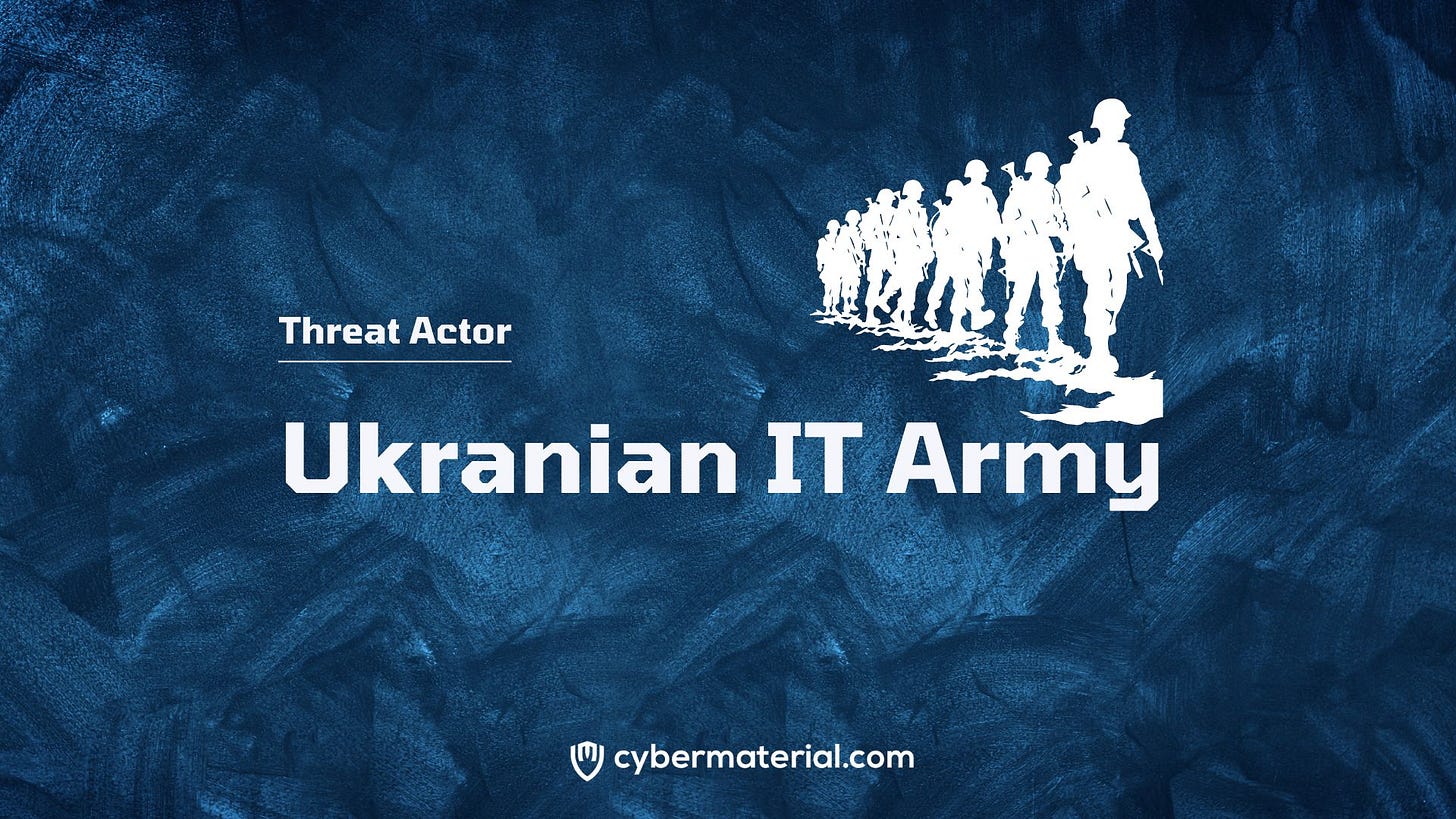
Ukranian IT Army
Other Names
The IT Army of Ukraine
Location
Ukraine
Date of initial activity
2022
Suspected Attribution
Hacktivists
Government Affiliation
No
Motivation
Cyberwarfare
Associated Tools
DDoS Attack Tools:
LOIC (Low Orbit Ion Cannon)
HOIC (High Orbit Ion Cannon)
Botnets
Communication and Coordination Tools:
Telegram
Twitter
Custom-developed Tools
Information Leak Tools:
Public Data Dumps
Software
Servers
Overview
The Ukrainian IT Army, formed in the wake of Russia’s large-scale invasion of Ukraine in February 2022, represents a significant development in the realm of cyber warfare. As traditional military confrontations unfolded, Ukraine’s digital defense strategy evolved to include a volunteer-driven cyber unit aimed at countering Russian cyber aggression. This initiative, announced by Ukraine’s Deputy Prime Minister Mykhailo Fedorov, sought to harness the power of civilian volunteers in the fight against a formidable cyber adversary. The IT Army of Ukraine, leveraging its expertise and resourcefulness, has become a key player in the ongoing cyber conflict between the two nations. The IT Army of Ukraine operates with a clear mission: to disrupt Russian digital infrastructure and support Ukraine’s national defense efforts through cyber means. Utilizing platforms such as Twitter and Telegram, the group coordinates its attacks, recruits volunteers, and disseminates information about their operations. The IT Army’s activities predominantly involve executing Distributed Denial of Service (DDoS) attacks, which overwhelm Russian websites and networks, rendering them inaccessible. These cyber offensives are not merely symbolic; they aim to inflict tangible damage on Russia’s economic and operational capabilities.
Common Targets
Russia – Public Administration Information
Attack vectors
Software Vulnerabilities Networks
Associated Tools
DDoS Attack Tools:
LOIC (Low Orbit Ion Cannon): A popular tool for launching DDoS attacks, LOIC is used to flood a target with traffic to disrupt its services.
HOIC (High Orbit Ion Cannon): An enhanced version of LOIC that can launch more powerful DDoS attacks with increased traffic volume.
Botnets: The IT Army may use botnets—networks of compromised computers—to amplify the scale and impact of their DDoS attacks.
Communication and Coordination Tools:
Telegram: Used for organizing and coordinating attacks, sharing information, and recruiting volunteers.
Twitter: Employed for public announcements, updates on their operations, and engaging with supporters.
Custom-developed Tools:
The IT Army of Ukraine has reportedly developed custom tools tailored to their specific needs for conducting cyber attacks. These tools might include scripts or software designed for launching DDoS attacks, exploiting vulnerabilities, or extracting data. Information Leak Tools: Public Data Dumps: After attacking and compromising systems, the IT Army may use platforms like Telegram to disseminate sensitive data and information obtained from their targets.
How they work
The IT Army of Ukraine operates with a clear mission: to disrupt Russian digital infrastructure and support Ukraine’s national defense efforts through cyber means. Utilizing platforms such as Twitter and Telegram, the group coordinates its attacks, recruits volunteers, and disseminates information about their operations. The IT Army’s activities predominantly involve executing Distributed Denial of Service (DDoS) attacks, which overwhelm Russian websites and networks, rendering them inaccessible. These cyber offensives are not merely symbolic; they aim to inflict tangible damage on Russia’s economic and operational capabilities. This volunteer cyber unit’s strategic focus extends beyond mere disruption. By targeting critical sectors and leveraging custom-developed tools, the IT Army seeks to hinder Russian operations and expose sensitive information. The group’s efforts underscore the growing importance of cyber capabilities in modern warfare, demonstrating how non-state actors can influence the broader conflict landscape. As the cyber domain continues to play a pivotal role in international conflicts, the activities of the IT Army of Ukraine highlight the dynamic and evolving nature of cyber warfare and the increasingly sophisticated tactics employed by state and non-state actors alike.
References:
The post Ukranian IT Army – Threat Actor first appeared on CyberMaterial.


